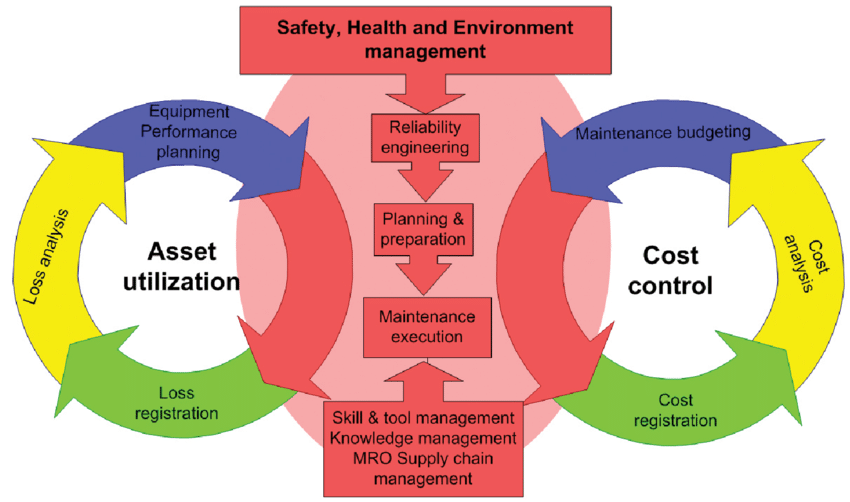
26
Feb
Sustainable Asset Management: An Essential Tool for Long-term Success
By: Scott L Podvin
“The Earth provides enough to satisfy every man’s needs, but not every man’s greed.” – Mahatma Gandhi.
Our planet’s resources are not limitless. According to research from the #WorldWildlifeFund, humans currently use the equivalent of 1.7 Earths to provide the resources we use and absorb our waste. At this rate, estimates show that by 2030, we will need the equivalent of two Earths. This stark reality means businesses must make sustainability a key part of their strategy to secure long term success.🧑 🤝 🧑
Sustainable asset management is the process of strategically managing resources to maximize value, minimize environmental impact and benefit both current and future generations. Research shows 80% of executives predict sustainability efforts will directly increase profits within 5 years. A report by NYU Stern Center for Sustainable Business found companies that develop sustainable products grew revenue on average 2.5 times faster than less sustainable peers over a 5-year period. 📈
The benefits of sustainable asset management are substantial and proven:
- Reduced costs: Energy efficient technology and streamlined processes lower utility bills and operational expenses. The World Economic Forum estimates global transition to renewable energy could yield $26 trillion in economic benefits through 2050.
- Increased competitiveness: Sustainable companies are 60% more likely to attract and retain talent according to MIT Sloan research. Consumers also favor sustainable brands, with 73% willing to change consumption habits to reduce environmental impact according to Nielsen.
- Improved risk management: By identifying environmental and social risks, companies can avoid costs from regulatory fines, reputational damage, and stranded assets. The Governor of the Bank of England has warned that climate change poses risks to global financial stability.
- Innovation: The transition to sustainability spurs new technologies that can transform industries and cultures. The renewable energy sector has blossomed into a $1.2 trillion market, supporting 10.3 million jobs worldwide according to the IRENA Renewable Energy and Jobs Annual Review 2020.
The first step towards sustainability is developing an effective asset management system that considers economic, environmental and social factors in decision making. Data and measurements must be leveraged to set goals and track progress.
How can companies measure and monitor progress towards sustainability goals?
There are several ways companies can measure and monitor progress towards sustainability goals:
1.Key Performance Indicators (KPIs): Companies can establish KPIs related to their sustainability goals, like reduced carbon emissions, water usage, waste generation, etc. They can then track these KPIs over time to see progress. For example, a company may aim to reduce carbon emissions by 50% over 5 years. They would measure annual carbon emissions to monitor progress toward that goal.
2.Sustainability reporting: Companies can publish annual sustainability reports that disclose their environmental and social impacts, goals, and progress. These reports allow both the company and stakeholders to understand year over year progress. Many companies use standards like GRI (Global Reporting Initiative) to guide their sustainability reporting.
3.Life cycle assessments: Companies can conduct life cycle assessments of key products and operations to measure environmental and social impacts throughout the supply chain, from raw material extraction to end-of-life. By performing periodic life cycle assessments, companies can identify areas for improvement and track progress in reducing impacts.
4.Environmental management systems (EMS): Setting up systems like #iso14001, which is an environmental management system standard, allows companies to measure key metrics, set targets, and monitor progress against those targets. With an effective #EMS in place, companies will follow a “plan, do, check, act” process for continuous improvement.
5.Surveys and feedback: Companies can survey both internal and external stakeholders to gauge how sustainability efforts and progress are perceived. Employee or customer satisfaction surveys, for example, can show how views are changing over time. Open feedback channels also allow for suggestions to improve sustainability practices.
6.Audits: Both internal and third-party audits of sustainability goals and metrics can help monitor effectiveness and progress. Audits provide an objective assessment of what’s working and where more effort is needed. For the best results, companies should conduct audits on a regular basis.
In summary, tracking quantifiable KPIs, publishing sustainability reports, performing life cycle assessments, setting up environmental management systems, gathering stakeholder feedback, and conducting regular audits are some of the best ways for companies to measure and monitor progress towards their sustainability goals.
Finally, policies and governance are needed to embed sustainability throughout company operations.
Sustainable investing is the future. Our planet depends on businesses to take action today to ensure stability and prosperity for generations to come. Make sustainability your priority – our world will be better for it! #sustainableinvesting #ESG #greeninvesting 💚
Call us today to discuss how we can provide sustainable asset management for your business! 📞Like, share and subscribe to join our mission of building a greener future for all! ☀️🌎 To learn more about sustainability subscribe to the Sustainable Investing Digest on Linkedin here: https://www.linkedin.com/build-relation/newsletter-follow?entityUrn=7053058780464345088 #sustainability #sustainabilityreporting #esg #ai #technology
This article was also published in Medium here: https://medium.com/@optimizationpros/sustainable-asset-management-an-essential-tool-for-long-term-success-20ba38db89f6